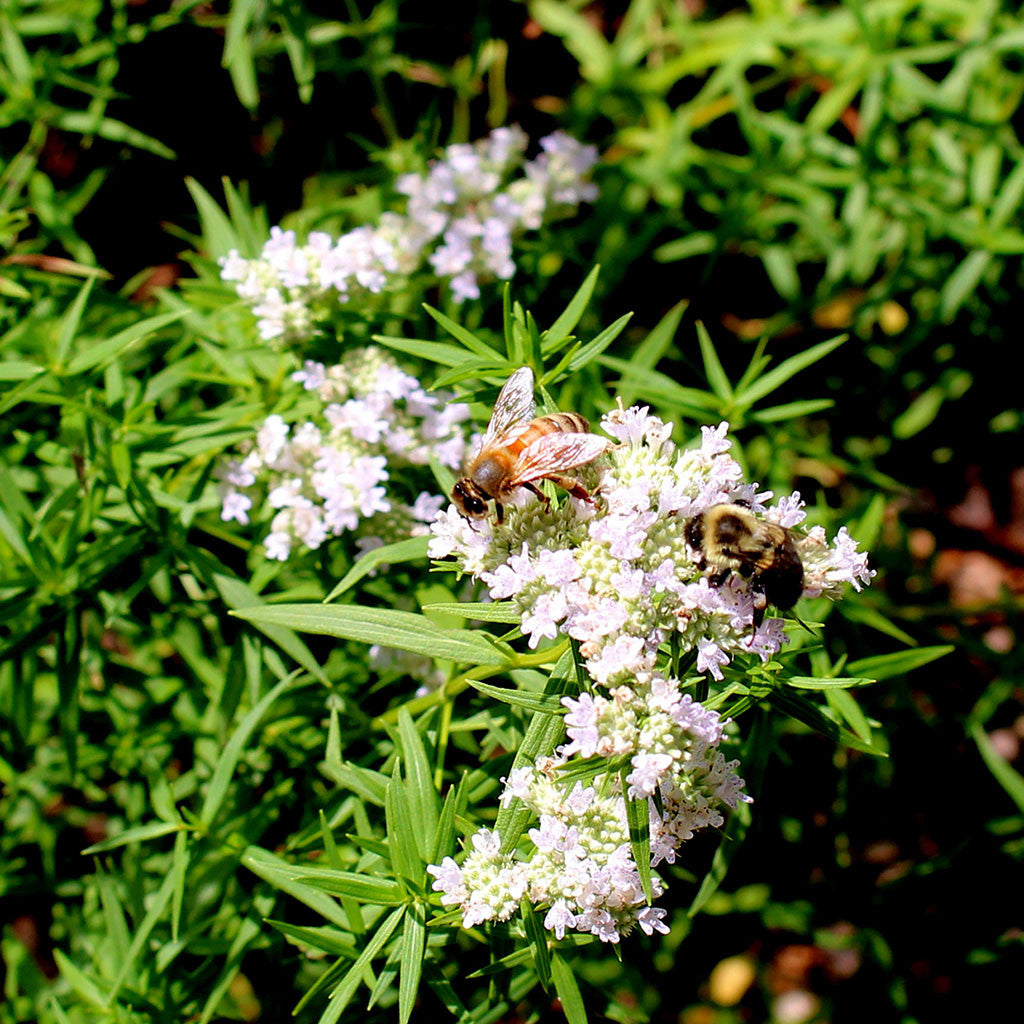


Naturally, I thought it was another invasive mint and was about to dismiss the plant when he noted it was merely a dense, ‘weed-suppressing’ plant and not invasive. The gentleman leading the tour mentioned how these masses of Mountain Mint had been installed in an effort to reduce weeds. Although the day was cloudy and it was mostly growing beneath a canopy of tall trees, the plant gave the impression of sunlight cutting through openings in the branches and illuminating the forest floor beneath. It appeared periodically throughout the park as a 2–3' tall mass of shimmering silver along the edge of woodlands and ponds. Personally, I was not introduced to this plant until 2010 while touring Central Park. Zoom in Photo 1: Silver colored bracts of Pycnanthemum muticum. Although the common name is Mountain Mint, it actually does not grow in alpine regions, but rather in open, moist fields and forest edges, often located along the lower elevations of a mountain. The species epithet comes from the Latin Muticus for blunt, perhaps a reference to the dome-shaped or blunt appearance of the apical flowers. It only took a few years for the French botanist and mycologist Christiaan Hendrik Persoon (1761–1836) to assign the proper genus name in 1806. Interestingly, in the same book he described a new genus named Pycnanthemum! Both names are from the Greek to describe the flower structure Brachys means short and Stelma means column while Pyknos means dense and Anthos means flower. It was initially brought to the attention of European botanists by the French botanist Andre Michaux (1746–1802) in 1790, when he found masses of the plant growing in Pennsylvania! Michaux initially named and described the plant as Brachystemum muticum, which was published posthumously in 1803 in his work Flora Boreali-Americana. Mountain Mint is certainly not a new plant to the world of horticulture. Mountain Mint, botanically known as Pycnanthemum muticum, is one such member of the Lamiaceae and it defies my imagination as to why this plant is not more popular among gardeners. However, there are other plants in the mint family or Lamiaceae that display a far greater degree of garden refinement and manners. Typically, our first thought is of a plant with wonderfully fragrant foliage that happens to combine well with Ice Tea and Mint Juleps! Unfortunately, this is matched with an equally unsettling vision of a plant that knows no boundaries and will rapidly spread throughout your garden! True mints are found within the genus Mentha, and their aggressively spreading nature makes them problematic in an ornamental garden. In fact, it's much more obedient then mint-if it's naturalizing where you'd rather it not grow, just break the roots on the outside border of the plant in spring.Mint is a plant that conjures up a multitude of thoughts and emotions among gardeners. But its name is deceiving-it's not in the mint family at all. If you have room to cover and you want a quick, fragrant, lovely solution that won't be put in its place by weeds, Mountain Mint is the way to go. Nobody wants a plant that takes over the garden, and Mountain Mint is a strong naturalizer. Gardeners can shy away from this variety because of the word "mint". Be sure to cut some fragrant flowers, either fresh or for a dried bouquet. It adapts with ease to poor soils and is drought tolerant once established. This is a native plant to North America, so you won't have trouble growing it, especially in woodland gardens. Deer tend not to bother it, thanks to its lovely minty perfume, and it contains a chemical that can repel mosquitos. There are a few things you'll be glad to know Mountain Mint doesn't attract too. It is, in fact, one of the best nectar sources for certain types of butterflies. As soon as those bracts open, all kinds of pollinators flock to it, and it'll provide them a sweet treat for months on end. If you want to know more about pollinators-and see more species than you may have even realized exist in your neighborhood-this is what you plant. Mountain Mint is a plant for the environmentalist and the scholar.


 0 kommentar(er)
0 kommentar(er)
